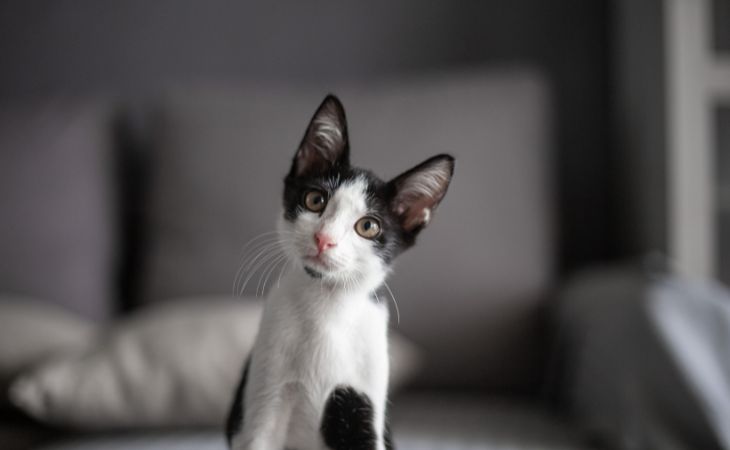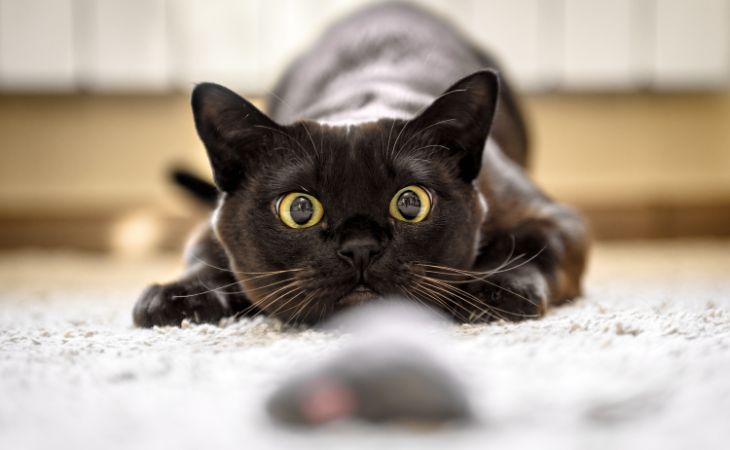Most cat owners have probably asked themselves at one point if their cat is capable of interacting with them emotionally. Cats are pets with specific behaviors that differentiate them from most other domestic animals. While cats are often seen as independent animals, they can also be curious and affectionate. In this article, Letsgetpet explains how to interpret the emotions and reactions of our cats.
Do cats feel the same emotions as humans?
Cats do feel some emotions that humans are able to show. With that being said, it’s important to avoid overly anthropomorphizing these behaviors, as their behaviors are specific to the species and can’t lead to any kind of sentiment. This is an ongoing debate in the scientific sphere. Cat owners should avoid associating their pet’s attitudes with emotions that are difficult to apply to their world because of their abstract nature.
Cats are very instinctive and emotional. They react naturally in most contexts and in the way that is most suitable to them. However, based on the education they receive, their experience in life or other types of stimuli, the way in which cats emotionally respond to things can evolve.
How do I interpret the emotions of my cat?
In order to understand your cat’s emotions, you need to try to understand their body language. It’s in this way that cats how they are feeling. Sounds or vocalizations that cats make are also precious indicators of their emotional state.
Joy
When cats are feeling happy, their behavior is calm and relaxed. For instance, you might see them blink their eyes slowly or keep them half closed. They can also purr often, especially when you pet them. Their whiskers are relaxed and their ears stand tall and straight.
Sadness
When cats are alone and don’t have anything to keep them entertained, they can feel bored and sad. You will be able to see this from their temperament. For example, they might stay in a corner of the house and meow constantly. Or instead, they could have destructive behavior to try to attract your attention. It’s important to make an effort to understand your cat and make them feel better when they are feeling bad or stressed.
Anger
In situations of discomfort, cats who feel constrained or who can’t understand what is happening may become angry. At first, their irritation can be noticed by nervous movements of their tail. They can also show aggressiveness by growling, or by pawing and scratching. In addition, they can stretch our their body to form an arc, while their tail is straight, or wrapped around them.
Fear
Cats show their fear with their ears. When scared, their ears turn towards their back and flatten. In addition, they can make their back round, make the hairs on their tail stand on end, make their hair on their body stand upright, or even lie down before running away. These are behaviors that cats can adopt when faced with another animal or stranger that they consider a threat.
Surprise
An unexpected awakening, a sudden noise, or abrupt movements are elements that can surprise cats. Their reactions vary from jumping backwards, running and sprinting in every direction, or simply fleeing.
Disgust
Cats are very clean animals. Because of this, a litter box with an unpleasant odor can provoke emotion in a cat. As they feel uncomfortable, they can refuse to go inside and won’t hesitate to do their needs elsewhere. This will usually stop once their owner understands the message and replaces the litter.

Is my cat sensitive to my emotions?
Cats do not perceive human emotions in the same way that we could wish for them to. They know, nevertheless, how to interpret your reactions to adapt to your mood. Animals appreciate playing with you when you are happy, while they will flee and isolate themselves when you are angry and yelling. Cats wait for you to be calm again and can come cuddle with you in your arms when you are sad. They observe our behavior and pay attention to our tone and voice.
Cars are capable of differentiating positive and negative attitudes and adopt the same attitude as well. For instance, cats can stay away if they notice that you are distant. For experts, cats are not exactly empathetic like we might think that some are. They are not capable of understanding human emotions themselves.
While their behavior can sometimes make us believe that they understand, this is because of associated learning. Cats observe, analyze, and show their affection towards their owner and other members of their household.
What you need to understand about cats when they show affection
Some cats can adopt affectionate behavior towards their owners while others are naturally more reserved. Here are a few things that prove the bond between you and your pet:
- your cat is very communicative,
- they can sleep close to you,
- your cat rubs their head or body against your legs,
- they purr when you pet them,
- they like to lick you or nibble on you,
- your cat doesn’t hesitate to show you their belly,
- they bring you presents.
Meowing is a sign that they appreciate your presence, as long as they are not expressing a complaint. Cats can also meow because they are happy to see you come home and be in your company again. They can also show more of their affection by trying to sleep close to you.
Cats rub their head against us to soak up our scent. They are also marking their territory. When your cat licks or nibbles on you, it means that they consider you a member of their family. This gesture was what their mother did to them to mark the link between them and their brothers and sisters.
Purring shows the absolute satisfaction of their needs. Showing their belly without fear proves their trust in you, since it’s a zone that is particularly vulnerable. They can also bring you presents like prey, representing them hunting for you.
Cats have a unique understanding of emotions
Cats feel emotions, but in their own way. It is important that you understand this before deciding to adopt or educate a cat. These animals can be affectionate, but can have hostile behavior when faced with another cat, animal, or person. The reasons are sometimes apparent, but can also be unique to them. Your cat can express, by anger, an attitude that can sometimes translate as hate, or even jealousy. These are terms that are sometimes used wrongly, under the prism of anthropomorphism, which consists of attributing human behavior to animals.
In reality, it’s usually a question of territoriality. Cats do not want to share their perimeters with newcomers, whether they be an animal or human. This is out of fear of having their habits change. It’s important to know also that a cat does not show signs of guilt or shame. When they do bad things, it comes from the impulses that they feel in the moment or from their instincts. Cats don’t care about the consequences. Their owners need to make them understand that they should not to do this, especially if caught in the act.
You might also find this article interesting: My cat is lying on their back, what does it mean?

